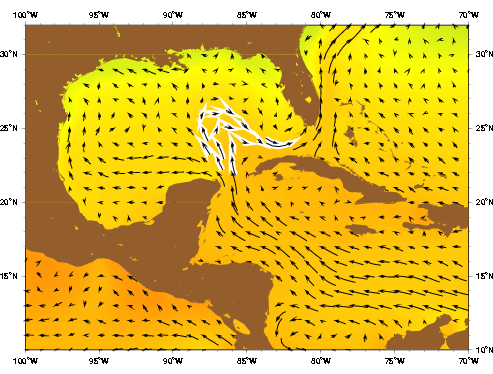After a lifetime boating and fishing professionally along the Gulf coast of Florida, first in the Ft. Myers area where I grew up, and now in the Eastern panhandle and big bend where I live now, I respectfully submit that you guys are overthinking this.
Yes, the loop current may have some effect, but in my opinion not until you are way offshore. But much more likely is that North winds here are associated with frontal passages/low pressures. Those fronts typically carry stronger winds with them. Strong N winds and fronts also push a lot of water out of the bays, making our already shallow waters even shallower.
Up here, even strong North winds can make for a nice day on the water if you don't go too far offshore. I've made the run from Apalach to Carrabelle a couple of times in 25 to 30 knot North winds. It was pretty nice.
I've also crossed the stream a number of times, and I'm familiar with that little gem too. It has a massive affect on conditions, we don't have nearshore currents in the Gulf that do that, at least not that I've seen.
On the other hand, as compared to the Atlantic, Gulf conditions change very rapidly and we get steep seas with microscopic periods that can be really nasty. My dad used to always say that 2 to 4 in the Gulf was as bad as 4 to 6 in the Atlantic.
A few weeks ago I was fishing with my sons in the Stuart area, it wasn't really windy, but there was a pretty big swell...I'd say six feet or so with a few bigger sets, long period and no chop really. We ran outside in my 18' flats boat and trolled up a few macks. I had to time the inlet (incoming tide made it better) but it was really pretty nice.
There is no way on earth I'd take my skiff out in 6' in the Gulf. We just don't get swells like that, it's either choppy or it's calm.

